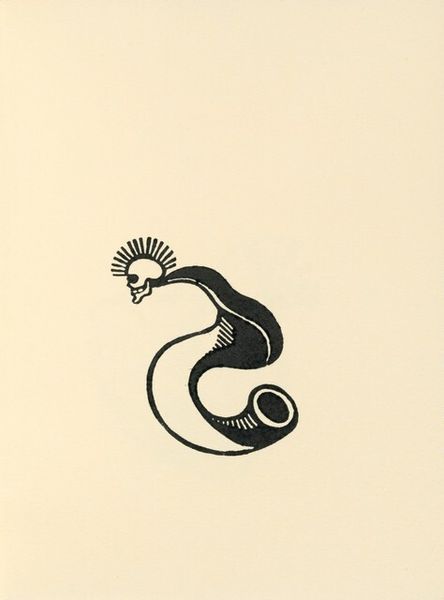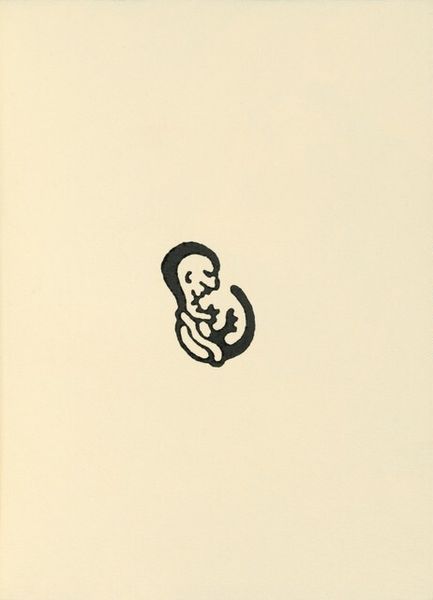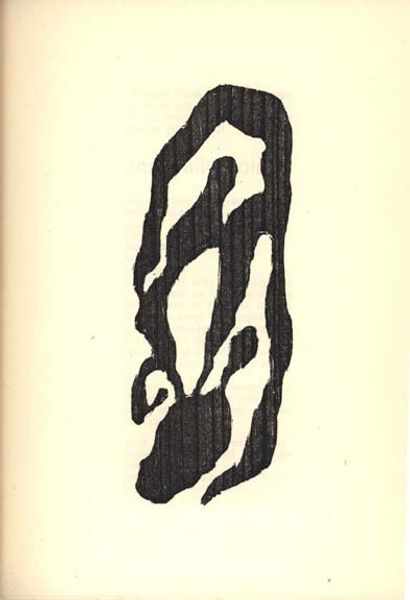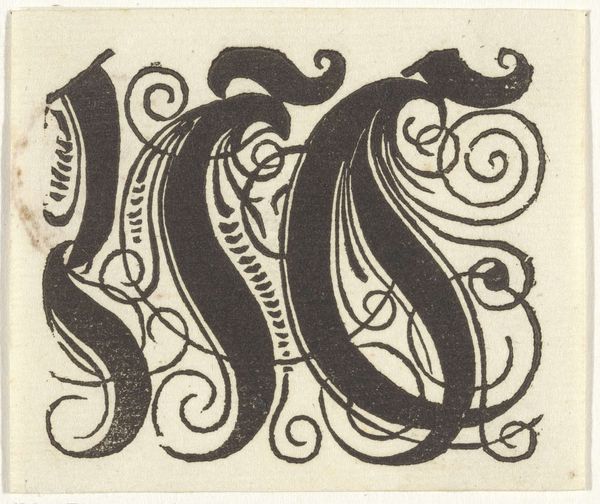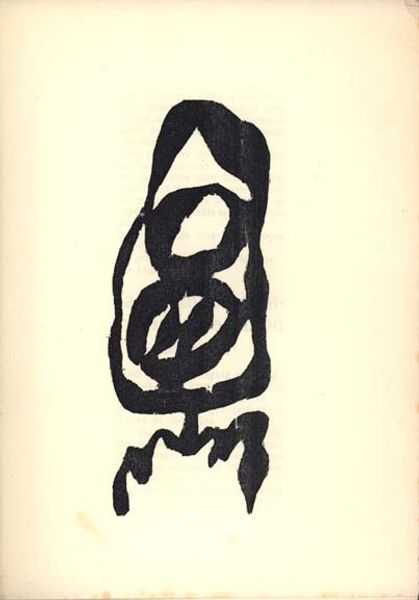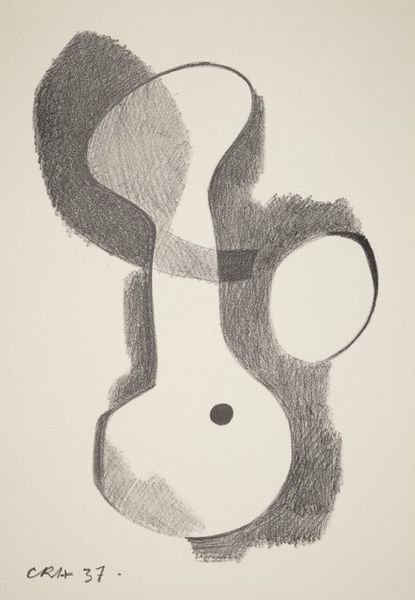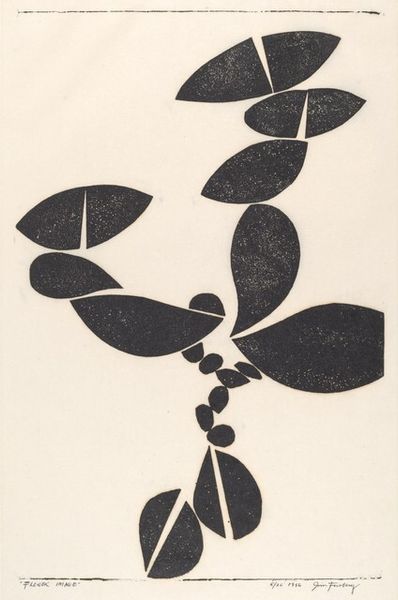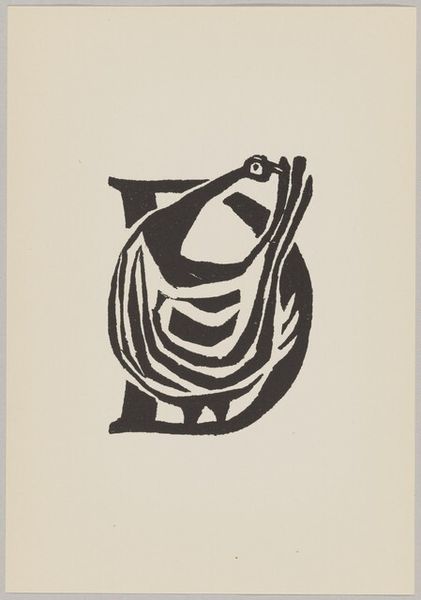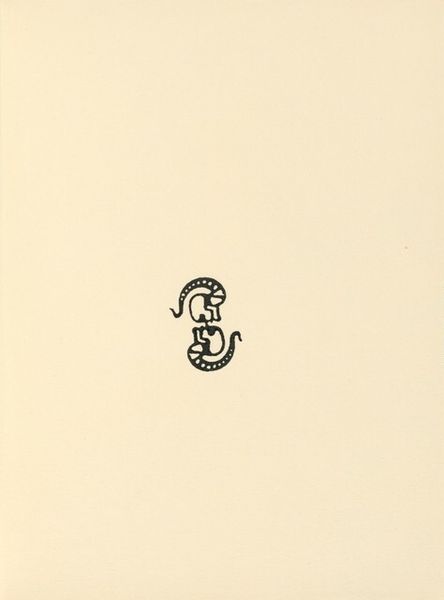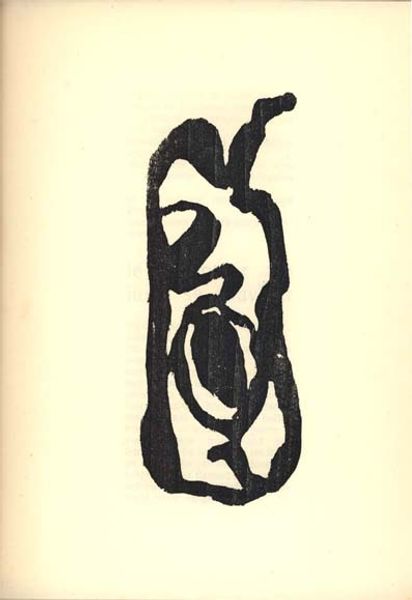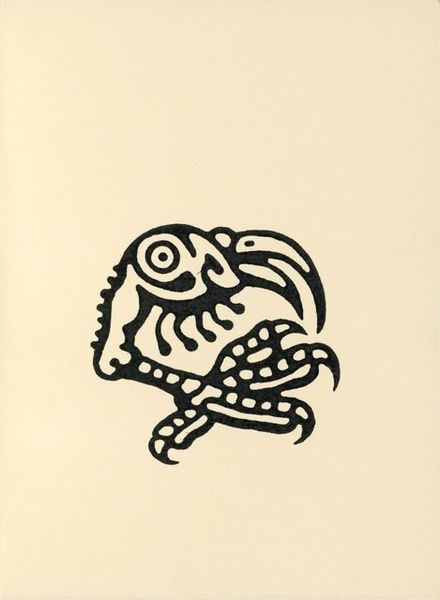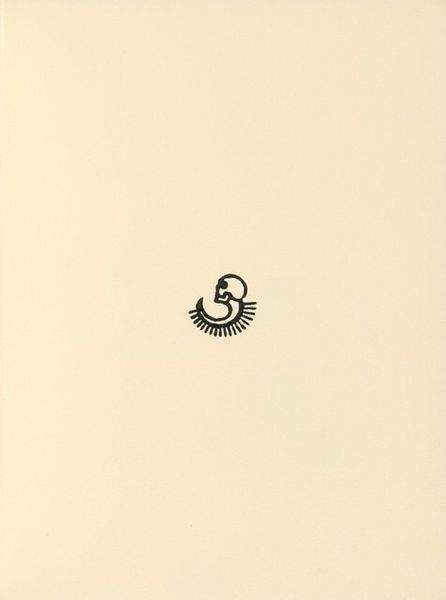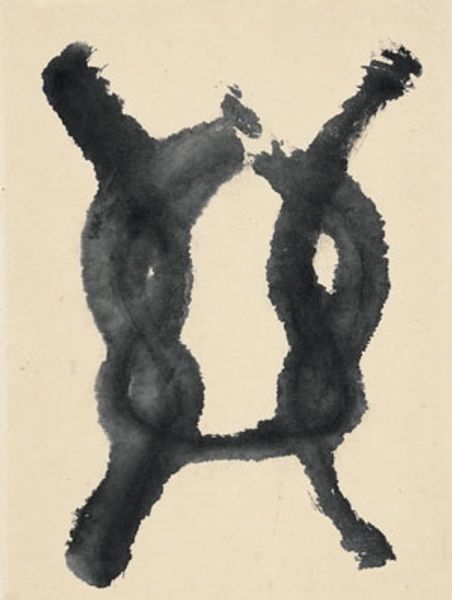![Untitled ["tattoo" book] by James McCracken Jr.](/_next/image?url=https%3A%2F%2Fd2w8kbdekdi1gv.cloudfront.net%2FeyJidWNrZXQiOiAiYXJ0ZXJhLWltYWdlcy1idWNrZXQiLCAia2V5IjogImFydHdvcmtzLzJkOGJlNWNmLTE5YzEtNGE2Mi1iM2IyLTQxM2MxMGQxNTJlOC8yZDhiZTVjZi0xOWMxLTRhNjItYjNiMi00MTNjMTBkMTUyZThfZnVsbC5qcGciLCAiZWRpdHMiOiB7InJlc2l6ZSI6IHsid2lkdGgiOiAxOTIwLCAiaGVpZ2h0IjogMTkyMCwgImZpdCI6ICJpbnNpZGUifX19&w=1080&q=75)
drawing, ink
#
drawing
#
ink
#
geometric
#
abstraction
Dimensions: overall (closed): 17.1 × 13 × 1.5 cm (6 3/4 × 5 1/8 × 9/16 in.) sheet (each approx.): 16.4 × 12.6 cm (6 7/16 × 4 15/16 in.)
Copyright: National Gallery of Art: CC0 1.0
Curator: What immediately strikes you about this ink drawing, simply titled "Untitled [tattoo book]", by James McCracken Jr. made in 1971? Editor: There's a boldness in its simplicity, a directness that I find appealing. These stark black and white shapes against the cream background are really evocative. They give me the impression of…organic forms floating in a kind of primordial soup. Curator: "Tattoo book" suggests a deliberate choice of form. Perhaps McCracken was exploring the cultural weight of such imagery in a world steeped in psychedelia. It almost reads like some primordial genetic code. Editor: It's fascinating to think about how countercultural trends were appropriating ancient symbolism. Tattoos, for instance, can serve as historical markers on the body. But how does that translate when put on paper like this? What sociopolitical statement is being made here, if any? Curator: It gets into this strange psychological space, doesn’t it? The abstracted forms feel vaguely familiar, almost recognizable, yet they resist easy definition. The bold outlines almost evoke something tribal, a memory passed through time. Are these images embedded deep in our collective unconscious? Editor: I wonder if this piece relates at all to ideas around the artistic commodification of identity in the '70s. Tattoos are permanently part of your physical presence. By abstracting and translating them through a medium like ink drawing, does that depersonalize or give ownership to something deeply rooted to personal and social histories? Curator: These graphic symbols do open a conceptual discussion, which could definitely tap into issues of cultural identity, particularly how symbols get separated and become abstracted over time and the power they continue to yield regardless. Editor: In the end, I find this simple piece a little troubling yet provocative as it gets to these more expansive issues. Curator: Yes, I completely agree. It’s a good reminder that imagery has social life that should also consider historical and contemporary realities.
Comments
No comments
Be the first to comment and join the conversation on the ultimate creative platform.
